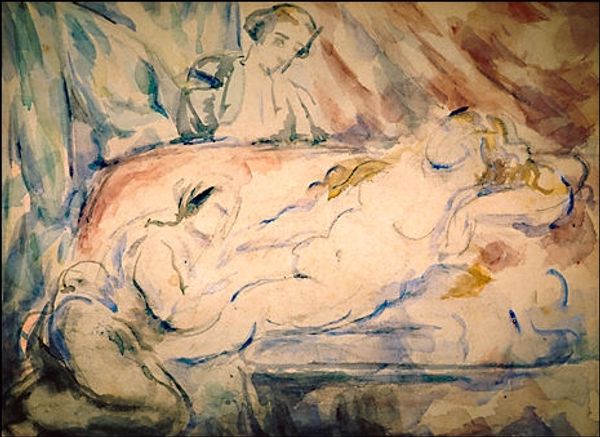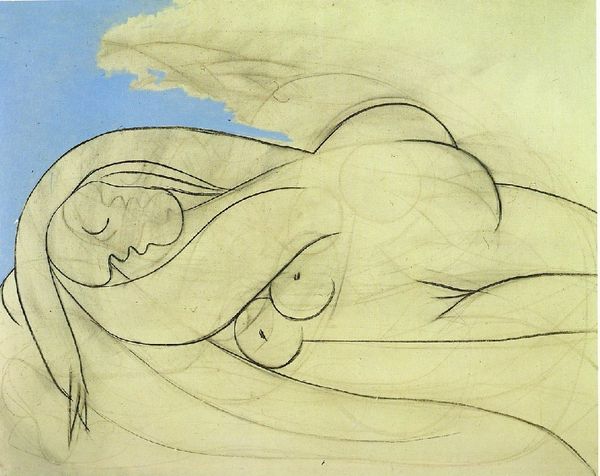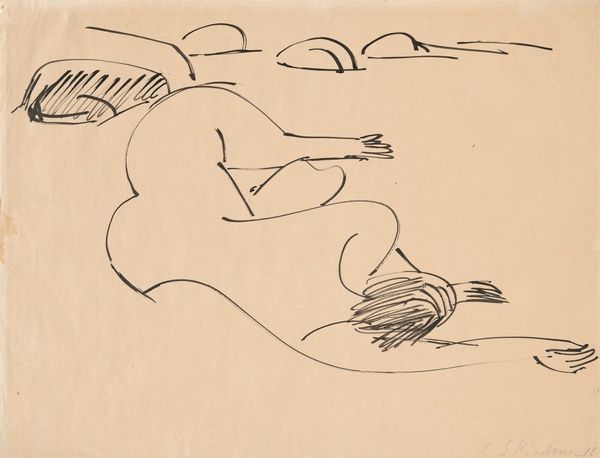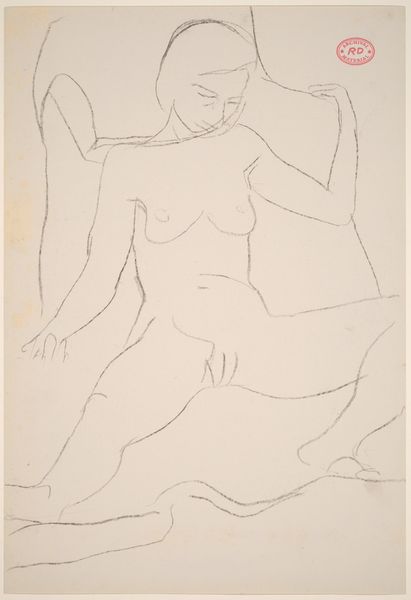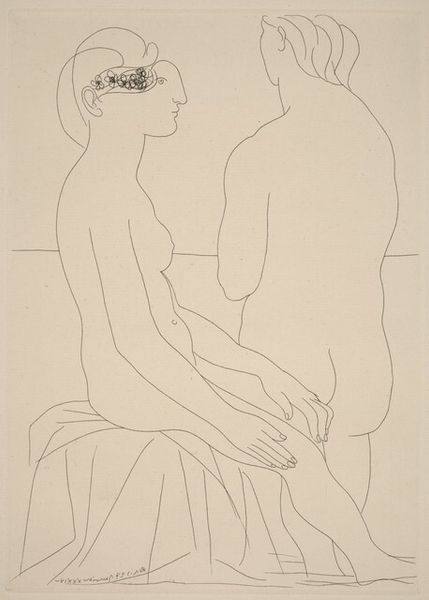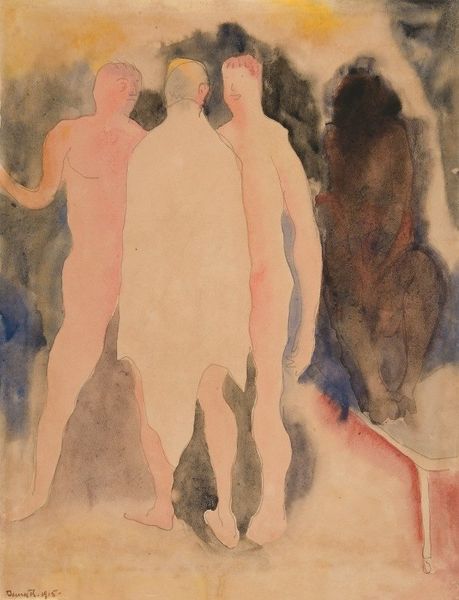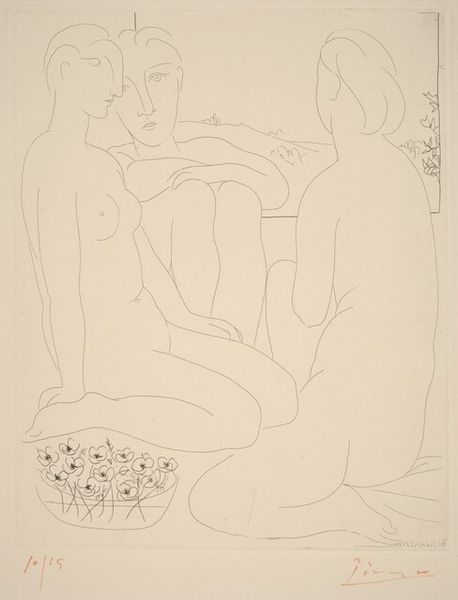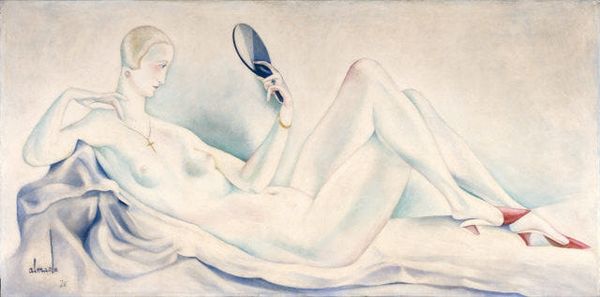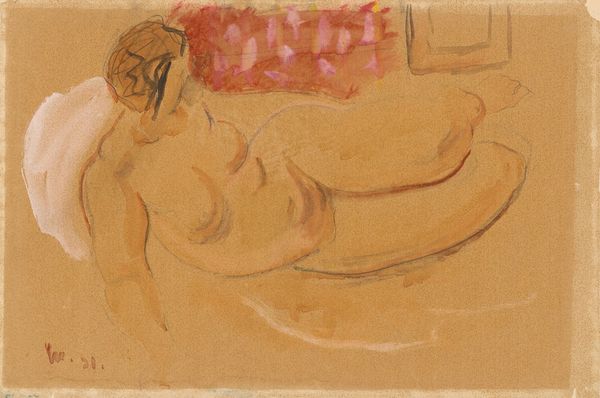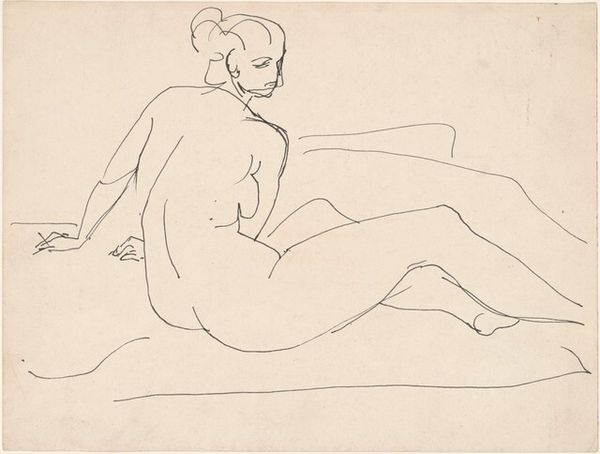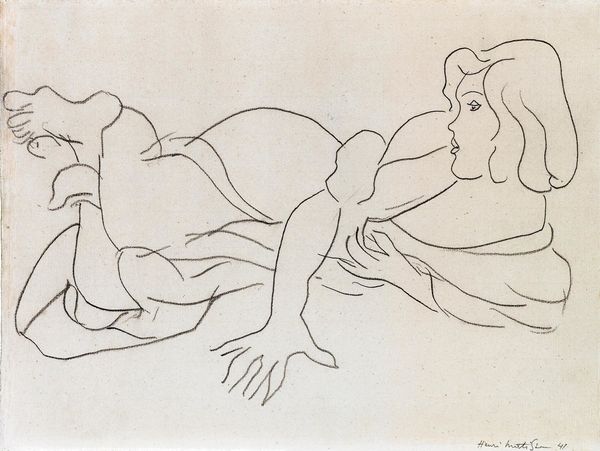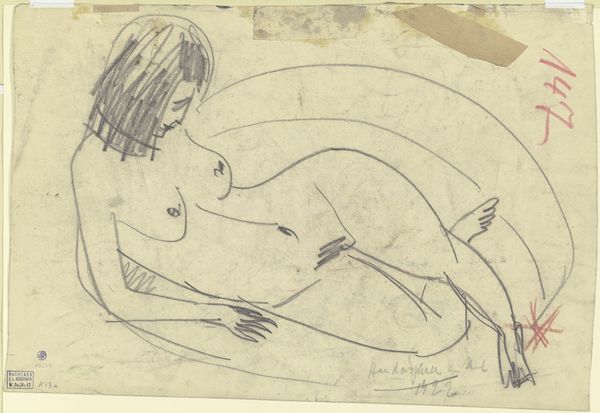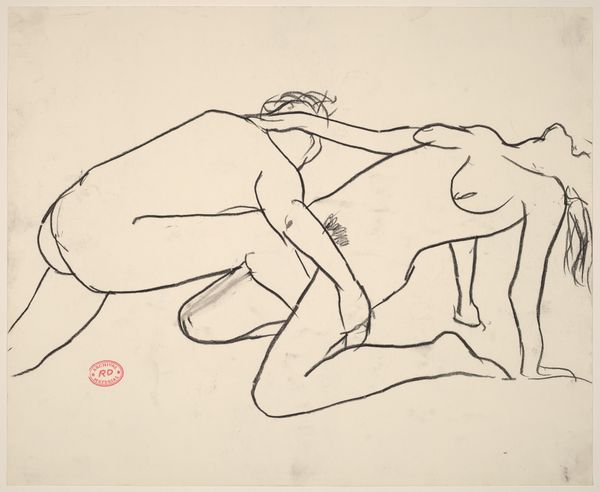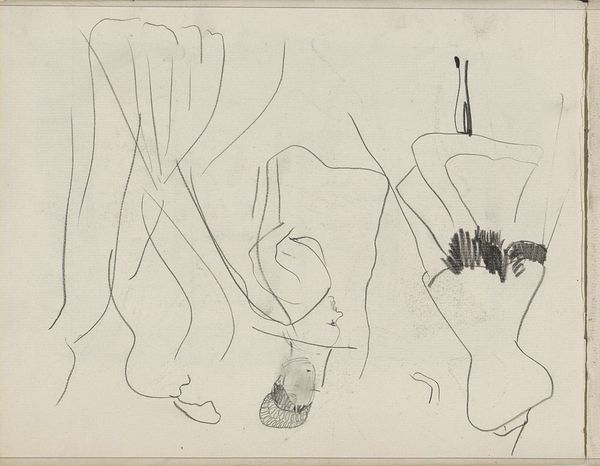
Copyright: Public Domain: Artvee
Curator: I’m struck by the lightness of touch in Charles Demuth’s “Woman with Hat and 2 Figures,” circa 1916. The washes of watercolor create such a delicate, almost ethereal quality. What's your initial read? Editor: Ethereal is a perfect description. There’s a real sense of captured light and movement in this watercolor, a study in composition through layering of sheer hues. I am thinking of the work done on depicting modern women and the era’s changing social landscape when I see it. Curator: Precisely! Looking at the image with a more social historical understanding, we can examine how Demuth employed what was a relatively new, readily available art medium to represent shifting concepts around women’s roles and leisure. Editor: So, you are referring to a break with academic formality? Demuth embraces fluidity and a looser construction to depict figures, mirroring a societal move away from Victorian ideals? It's very interesting how the medium itself, its ease of use, speaks to that changing reality. Curator: Indeed. Watercolor offered greater accessibility, democratizing artistic expression in a way, right? This would provide means of production accessible to many to make images depicting figures engaged in leisured activities, thus reflecting how modern life was developing. We can even read the figures’ poses through the lens of increased female agency. Editor: Absolutely, and formally, this contributes to the overall aesthetic, as the gentle diffusion of color, its semi-transparency gives a certain fragility, a sense of ephemerality—as if capturing a fleeting moment. I think the negative space, the deliberately bare portions of the paper, amplifies that. Curator: Yes, the sparse composition leaves a good bit to the viewer’s imagination, emphasizing process through making visible choices as he composes. In terms of consumption of art, watercolor had become widely accessible for production purposes; Demuth seems interested in revealing these structures of modern painting by pointing us toward material conditions—revealing rather than obscuring his creative choices. Editor: So insightful to understand how Demuth merges both material with subject, in that we glimpse societal trends through art making. Ultimately, I am fascinated by the layers of historical and stylistic expression Demuth's watercolor manages to evoke. Curator: It really shows us how the seemingly simple can hold such multifaceted reflections of artistic shifts.
Comments
No comments
Be the first to comment and join the conversation on the ultimate creative platform.
